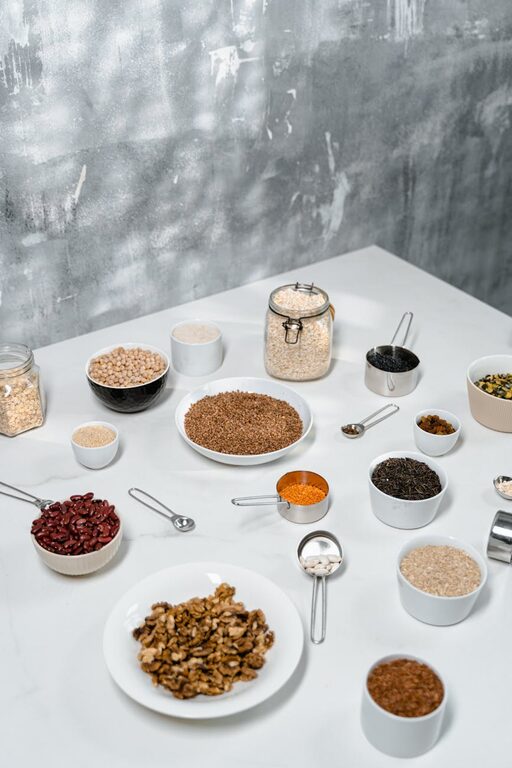
Planning meals from pantry staples is a smart way to save time, reduce food waste, and stick to a budget—all while making tasty and satisfying dishes. Your pantry is a treasure trove of ingredients that can be combined in countless ways to create meals without needing a last-minute grocery run.
In this post, we’ll explore practical steps to help you plan and prepare meals using what’s already in your pantry. Whether you’re new to cooking or a seasoned home chef looking for inspiration, these tips will help you make the most of your staple supplies.
Understanding Your Pantry Staples
Before you start planning meals, it’s important to know what “pantry staples” means. Typically, these are non-perishable or long-lasting items stored in your kitchen that serve as a base for many meals. Common pantry staples include:
– Dried grains like rice, pasta, quinoa, and oats
– Various canned goods such as beans, tomatoes, vegetables, and tuna
– Baking essentials like flour, sugar, baking powder, and yeast
– Spices, herbs, and seasonings
– Oils and vinegars
– Stock cubes and broth concentrates
– Nut butters and canned coconut milk
Make a quick inventory of what you have on hand. This not only helps you avoid duplicate purchases but also sparks ideas on what dishes you can make.
Step 1: Organize Your Pantry for Easy Access
An organized pantry makes meal planning much easier. Here are some tips to get started:
– Group similar items together: Keep grains, canned goods, spices, and baking supplies in separate sections.
– Label containers: Transfer loose items like flour or beans into clear containers and label them for quick identification.
– Keep a list: Maintain a running list of pantry items on your phone or a notepad so you can reference it anytime.
With everything visible and easy to find, you’ll be more confident in knowing what’s available for meal planning.
Step 2: Plan Meals Around Key Ingredients
Once you know what you have, think about the kinds of dishes that match your staples. For example:
– Beans and rice: Can be combined for a hearty vegetarian meal or served as sides to protein.
– Pasta and canned tomatoes: Make a quick pasta sauce with spices and canned tomatoes.
– Oats and nuts: Great for breakfast granola or energy bars.
– Canned tuna and crackers or pasta: Easy sandwiches or pasta salad.
Try to identify a staple ingredient and think about what cuisine or meal type it fits. This approach helps narrow down your options and makes shopping for fresh additions simpler.
Step 3: Mix and Match for Variety
Don’t feel stuck cooking the same thing! Experiment by combining pantry staples in new ways:
– Use chickpeas in place of beans for a different flavor.
– Swap white rice for quinoa or couscous for variety and extra nutrients.
– Add canned vegetables to soups and stews for more depth.
– Mix spices like cumin, paprika, or cinnamon to change up your dishes.
This creativity keeps meals interesting and helps you discover new favorite recipes.
Step 4: Add Fresh Ingredients When Possible
While pantry staples provide a solid base, fresh items elevate your meals. When planning, consider adding:
– Fresh or frozen vegetables like spinach, carrots, or bell peppers
– Proteins such as chicken, eggs, or tofu
– Fresh herbs like cilantro or parsley for brightness
– Citrus fruits (lemons, limes) for acidity and freshness
You don’t need a long grocery list—just a few fresh items can transform a pantry meal into something special.
Step 5: Use Planning Tools and Resources
To keep things organized, consider:
– Meal planning apps: Some apps let you input pantry items to suggest recipes.
– Recipe blogs and websites: Search by ingredient to find inspiration based on your staples.
– Weekly meal planners or printables: Write down your meals and shopping list to streamline your week.
These tools reduce stress and help you repeat successful meals with ease.
Sample Pantry Meal Ideas
Here are a few simple meal ideas using common pantry staples:
1. One-Pot Tomato and Bean Pasta
– Ingredients: pasta, canned tomatoes, canned beans, garlic, olive oil, chili flakes, dried basil
– Method: Sauté garlic in oil, add tomatoes and beans, then mix in cooked pasta and seasonings for a quick, filling dinner.
2. Chickpea Curry
– Ingredients: canned chickpeas, canned coconut milk, curry powder, canned tomatoes, rice
– Method: Sauté curry spices, add chickpeas, tomatoes, and coconut milk, simmer and serve over rice.
3. Lentil Soup
– Ingredients: dried lentils, canned or dry broth, canned vegetables, onions, carrots, celery, seasoning
– Method: Sauté veggies, add broth and lentils, simmer until tender for a comforting soup.
4. Tuna Salad Wrap
– Ingredients: canned tuna, mayo or yogurt, mustard, canned corn, wraps or bread
– Method: Mix tuna with mayo, mustard, and corn, then wrap it up for a quick lunch.
Tips for Reducing Waste
– Use damaged or slightly past-prime canned goods first.
– Freeze unused portions of cooked grains or beans.
– Repurpose leftovers into soups or casseroles.
– Plan meals to use up fresh ingredients before they spoil.
Thoughtful planning can stretch your food budget and keep your kitchen efficient.
Final Thoughts
Meal planning using pantry staples is an empowering way to cook economically and creatively. By knowing your pantry contents, organizing ingredients, and combining them cleverly, you can enjoy delicious, varied meals every week. Start with what you have today, add fresh touches when possible, and watch your confidence in the kitchen grow!
Remember, every great meal starts with a simple ingredient — often already sitting in your pantry.
Happy cooking!
